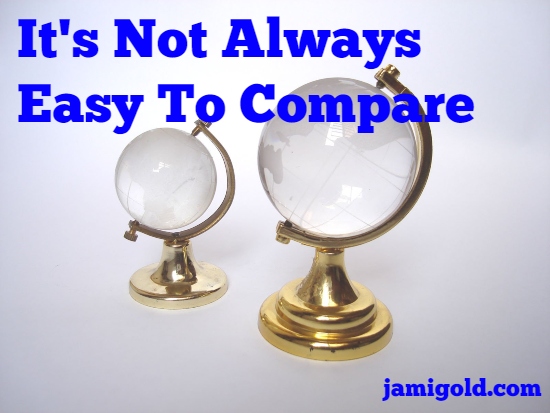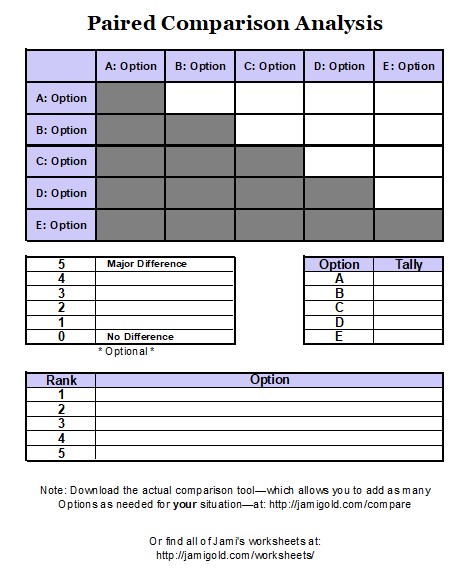How Can We Make Sense of Our Goals and Priorities?

We’ve talked a lot here about knowing out what our goals are. We tend to measure our success by whether we reach our goals, so if we don’t know what we’re reaching for, we might never feel successful.
The whole process comes with added complications if we pressure ourselves with lots of “if we’re X, we should do Y.” We can fill in that X with anything from “a serious writer” to “a good spouse/parent,” etc.
Between what we see others prioritize or the “shoulds” that follow us around from friends, family, or our own thoughts, it can be hard to know what our goals really are. Too often those other voices can get in the way of knowing what’s really important to us.
Plus, we likely have several different goals, some of which might be in conflict with other goals. We might want to write several books this year but also have a healthy work-life-writing balance, and that’s tricky to do.
So we need to figure out our true priorities—which goals are most important or what we’re willing to give up to reach other goals. With all the different voices, “shoulds,” and competing goals, the process of coming up with a truthful priority list can be complex, but a relatively simple technique can help us determine what’s really important to us.
How to Create a Ranked Priority List
How can we know what’s really important to us? A tool called a paired comparison table makes this easier.
Basically, to make the complex more straightforward, we’re going to focus on just two options at a time. Then we pit them against each other in a head-to-head question where we ask ourselves which we would choose if we could pick only one. Whichever option wins the most head-to-head “fights” is number one in our priority list, the option with the next most wins is number two, and so on.
Step #1: Create a Paired Comparison Table
Make a grid with a row and column for each item you want to rank. For our example, we’re imagining that we have 5 potential goals, so our grid would be 5 x 5 (not counting the header rows and columns).
List the items to rank down the header column and across the header row. The next step is easier if we label each option with a letter, such as A: Write 2 novels this year.
Cross out the boxes where goals meet themselves and every box below that one (which are duplicates). Note that creates a blocked out diagonal, leaving just a single head-to-head for each combination.
| A: Goal 1 | B: Goal 2 | C: Goal 3 | D: Goal 4 | E: Goal 5 | |
| A: Goal 1 | XXX | ||||
| B: Goal 2 | XXX | XXX | |||
| C: Goal 3 | XXX | XXX | XXX | ||
| D: Goal 4 | XXX | XXX | XXX | XXX | |
| E: Goal 5 | XXX | XXX | XXX | XXX | XXX |
Step #2: Compare Each Option
For each open box, compare the two items. Even if we’re not dealing with competing goals, imagine that we can’t get both. If we had to choose only one to have in our lives, which one would we pick?
With all our thoughts of what we “should” do, how can we figure out our true priorities? Click To TweetWrite the letter of the winner in the box. For example, in that first open box, if the head-to-head between A: Goal 1 and B: Goal 2 forces us to see Goal 2 as more important, we’d write B in the box.
An optional addition in using this tool is to follow each letter with a number score, specifying how much more important the winner is than the loser. We could use a number like 5 for a major difference and 1 for a minor difference. However, this step could make determining the winners more complicated, so only use this technique if we feel like the information would be helpful in more deeply examining our choices.
Step #3: Count the Winners
Once all the boxes are complete, count the number of times each letter won the head-to-head. How many As, Bs, Cs, Ds, and Es are listed in the boxes?
If we used a score to specify how important the difference between options were, we could add up those numbers and convert the final score to a percentage to label each option with its importance. With our example, each letter has four opportunities to be majorly different in importance from the rest, so a score of 20 (4 x 5) would be 100%, a score of 15 would be 75%, etc. However, due to the complexity of how to weigh that percentage, we might be better off playing around with whatever measurement works best for us.
Step #4: Order the Winners
Finally, we order the list of options by the number of wins. The letter with the most wins comes in first place, the letter with the next most wins comes in second, and so on.
In the case of a tie, look at the direct comparison between those two items to determine the winner. For example, if both A and B have 3 wins, we’d look at the box with their head-to-head comparison to name the tie-breaker.
Introducing the Paired Comparison Analysis Worksheet!
Want a pretty worksheet to use for your own comparisons? *grin*
(Note: Click on the image to see larger version. Newsletter readers: Click through to the post to check out the image of the worksheet.)
Download your own customizable version of this tool:
- Paired Comparison Analysis Worksheet (for MS Excel ’07/’10 (.xlsx) version) by Jami Gold
- Paired Comparison Analysis Worksheet (for MS Excel 2003 (.xls) version) by Jami Gold
Customizing Our Worksheet
Unfortunately, I don’t know of a way to make the blocked out squares automatically generate for adding more options, but it’s not too hard to fix the grid for your situation.
To add more options:
- Highlight all the boxes for the column E: Option. Right click and select Insert, and then choose Shift Cells Right.
- Click on the header row number to the left of E: Option to highlight the whole row. Right click and select Insert.
- Click in the new blank column header and label for your goal with the letter E.
- Click in the moved column labeled E: Option and change to your goal with the letter F.
- Fix the labels for the bottom two row headers as well.
- Copy one of the non-blocked out grid cells and paste on the extra blocked out cell to create the diagonal block/unblock pattern again.
To delete options, we can either just ignore the extra columns and rows or highlight the column boxes and header row numbers and right click to select Delete.
What Can We Do with a Ranked Priority List?
With a paired comparison analysis, hopefully we’ll better be able to cut through the clutter in our head to know what’s really important to us. Also if we’re lucky, most of our options aren’t really exclusive to each other—where if we get one we can’t get the other at all—and we’ll be able to get both in some fashion. *smile*
How can we rank our goals and priorities? And how can that help us? Click To TweetEven if we can get both (or all) of our goals, our list can help us plan our time. Knowing our real priorities means that we can see where we might need to cut back a bit to get the other things we want as well. Christina Delay has also guest posted here with her insights into finding balance with our priorities and general life stuff.
For example, if we recognize that our family or personal time is more important to us than we realized, we might scale back our writing goals from two novels to one novel and one short story. Or we might set ourselves a deadline for how long we’re going to minimize our other forgotten goals before making an adjustment.
We could decide that for such-and-such length of time, we’ll prioritize our writing goals above all others. As a bonus, we might be better about sticking to our deadline if we’re more aware of wanting to have time after the deadline for other things on our priority list.
Whatever we decide for our approach to life’s competing priorities, knowing what we really want will help us make decisions. And when we better understand our goals and priorities, we have a better chance of reaching success. *smile*
How well do you know your priorities? Do you struggle with competing priorities and goals? Have you heard of the paired comparison technique before? Was it helpful to you, and if so, how? Do you have any other suggestions in how we can use this type of tool in our life?
Pin It

Arrgh! This sounds like a tool for endless procrastination!
I like to write lists and this saves me having to keep reminding myself about various items. Then the items get done as I have time and energy (some are weather dependent or need other people to be around, need to have money available, so on.) I particularly like to stock up a few items to do while out of the house, or get on with items that I can get done while the kettle boils.
I can see where you are coming from but I think this tool will mainly help those who already procrastinate by reminding them to focus. After a happy hour, er, procrastinating.